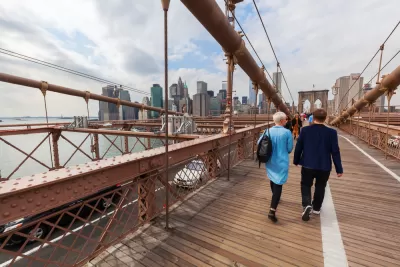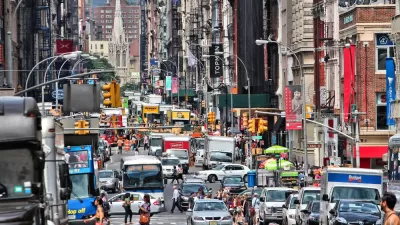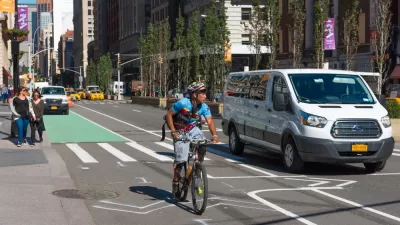Introducing the proposed Queens Ribbon Bridge, a $100 million idea to connect Manhattan to Long Island City in Queens, by way of Roosevelt Island.

Winnie Hu reports on a newly revealed proposal to "build the first new bridge to Manhattan in decades — one just for cyclists and pedestrians."
"The car-free bridge would connect Midtown Manhattan to Long Island City in Queens, near the site that Amazon had planned to build a headquarters before pulling out under intense community opposition," according to Hu.
"The car-free bridge would connect Midtown Manhattan to Long Island City in Queens, near the site that Amazon had planned to build a headquarters before pulling out under intense community opposition."
The proposal is still highly speculative, and would require local and state approvals and a heft investment during a period of deep fiscal austerity that is already threatening to delay other major capital investment projects in the city.
The proposal emerges just a few days after it was revealed that city officials are negotiating a plan to allow bikes a lane previously devoted to automobile travel on the Brooklyn Bridge, and as the city reopens parts of its economy without overnight subway service and low transit ridership numbers across the board, and the traffic conditions one might expect given those realities. The city has also put a groundbreaking congestion pricing scheme, charging cars for entering parts of Manhattan, on hold during the pandemic. The Regional Plan Association also recently revealed a Five Borough Bike Plan to help the city deal with congestion during and after the new normal of the pandemic.
The source article also includes a rendering of the proposed Queens Ribbon Bridge.
FULL STORY: A Bridge From Queens to Manhattan, but No Cars Allowed

Alabama: Trump Terminates Settlements for Black Communities Harmed By Raw Sewage
Trump deemed the landmark civil rights agreement “illegal DEI and environmental justice policy.”

Planetizen Federal Action Tracker
A weekly monitor of how Trump’s orders and actions are impacting planners and planning in America.

The 120 Year Old Tiny Home Villages That Sheltered San Francisco’s Earthquake Refugees
More than a century ago, San Francisco mobilized to house thousands of residents displaced by the 1906 earthquake. Could their strategy offer a model for the present?

In Both Crashes and Crime, Public Transportation is Far Safer than Driving
Contrary to popular assumptions, public transportation has far lower crash and crime rates than automobile travel. For safer communities, improve and encourage transit travel.

Report: Zoning Reforms Should Complement Nashville’s Ambitious Transit Plan
Without reform, restrictive zoning codes will limit the impact of the city’s planned transit expansion and could exclude some of the residents who depend on transit the most.

Judge Orders Release of Frozen IRA, IIJA Funding
The decision is a victory for environmental groups who charged that freezing funds for critical infrastructure and disaster response programs caused “real and irreparable harm” to communities.
Urban Design for Planners 1: Software Tools
This six-course series explores essential urban design concepts using open source software and equips planners with the tools they need to participate fully in the urban design process.
Planning for Universal Design
Learn the tools for implementing Universal Design in planning regulations.
Clanton & Associates, Inc.
Jessamine County Fiscal Court
Institute for Housing and Urban Development Studies (IHS)
City of Grandview
Harvard GSD Executive Education
Toledo-Lucas County Plan Commissions
Salt Lake City
NYU Wagner Graduate School of Public Service





























